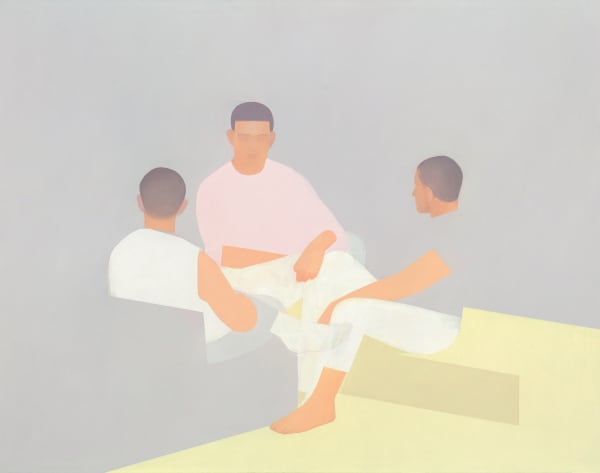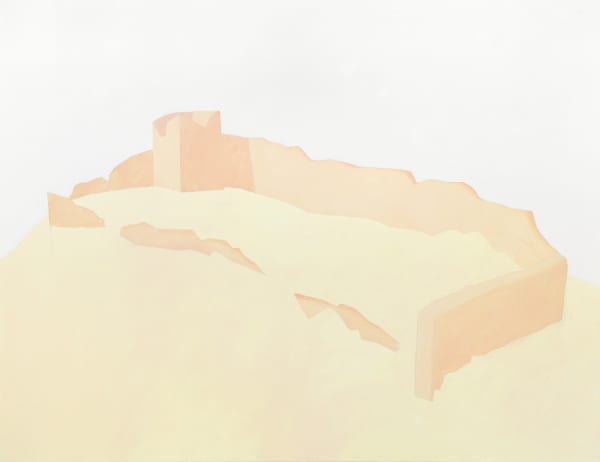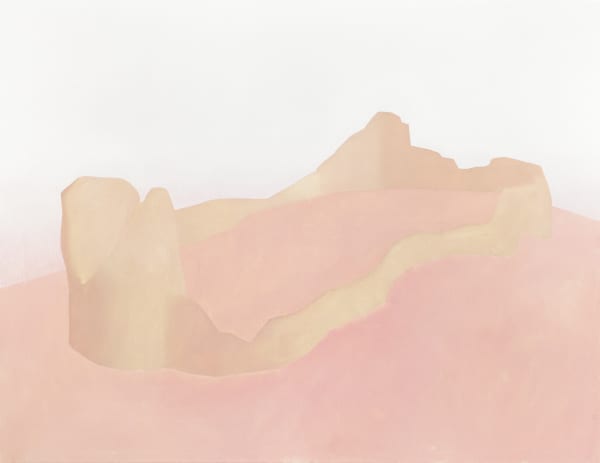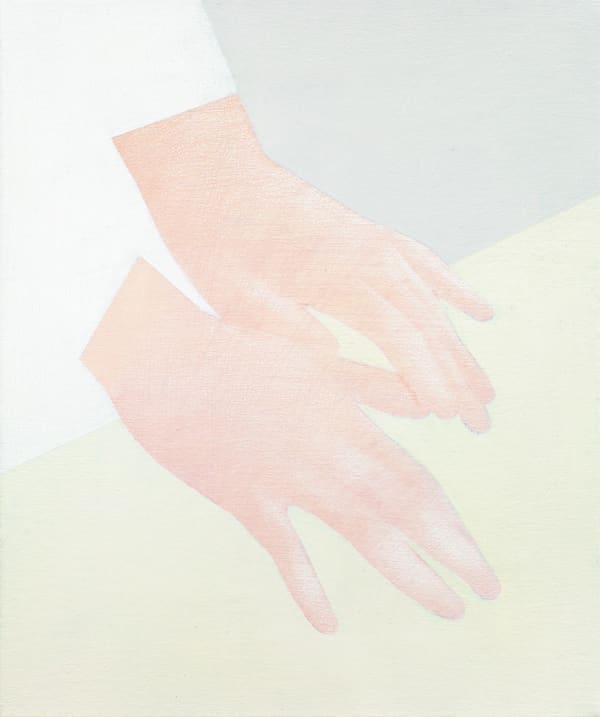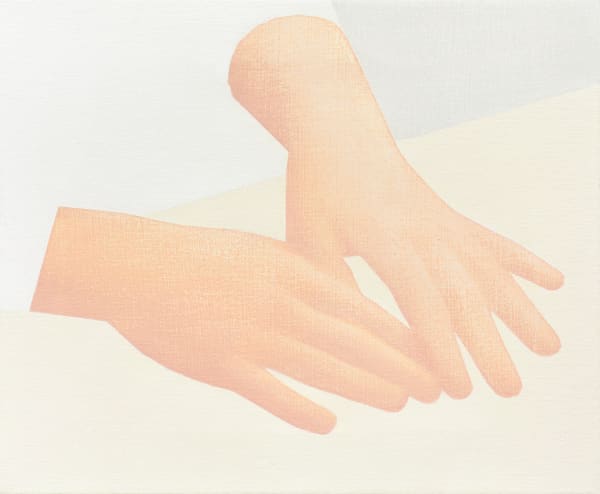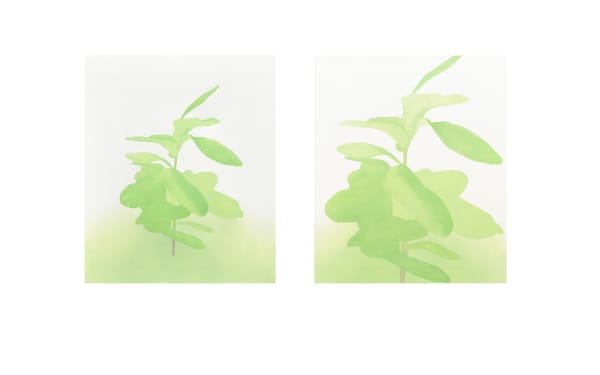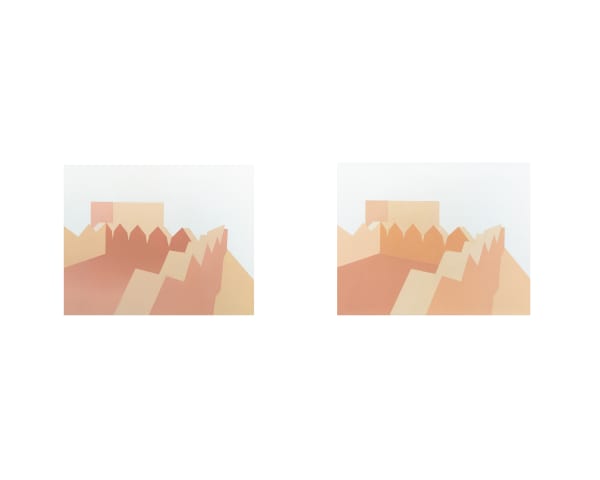MANUEL STEHLI
moving inland
Galerie Marguo is pleased to present Moving Inland, a body of new paintings by Swiss-Czech artist Manuel Stehli, on view at the gallery from 23 June to 24 July, 2021.
The paintings presented in Moving Inland – plants, landscapes, pairs of hands and groups of figures arranged in careful repose – seem to linger in an interminable moment composed of dusty pastel hues and geometric distillations, like prototypes for an eventual scenario in which these elements may come to life. The title of the exhibition, however, suggests that a certain motion is already afoot, be it psychological introspection or a tactical retreat.
Dates: 23 June – 24 July 2021
Artist: Manuel Stehli
-
-
Upon entering the gallery, visitors are met with a large-scale landscape of a rampart in ruins, reduced to its essential lines and volumes and rendered in thin, almost transparent layers of pale fleshy tones. The fortress is a defense mechanism, its presence implies an outside threat, that in turn engenders a sense of intimacy and kinship amongst those circumscribed within its walls.
-

Manuel Stehli
Untitled, 2021Stehli’s life-size portraits of standing and lounging figures depict familiar scenes of casual contact that feel warm and intimate, yet simultaneously muted. It is as though, despite assuming the correct positions for socialization, Stehli’s figures remain engulfed in their own internal spheres, incapable of truly making contact.
-

-

-
The notion of the simulacrum, or the "hyperreal", is alternatively associated with the condition of derealization, which is sometimes triggered in individuals after enduring prolonged periods of isolation or confinement. In this altered mental state, the subject feels detached from their surroundings, as one does when they have a head cold or clogged ears. It's a subtle, almost imperceptible lag between what is actually happening and how one perceives it, similar to the sensation of being under water, in zero gravity, or outside of time.
It is to be inside the action and simultaneously at a remove, psychically beside oneself, like an intimate alienation. Manuel Stehli's atmospheric paintings envelop the viewer in such a sensation that is at once tender and rife with longing for deeper, genuine contact.
-
-
A Story of Time
By Marguo Artist Thomas Bock Humery: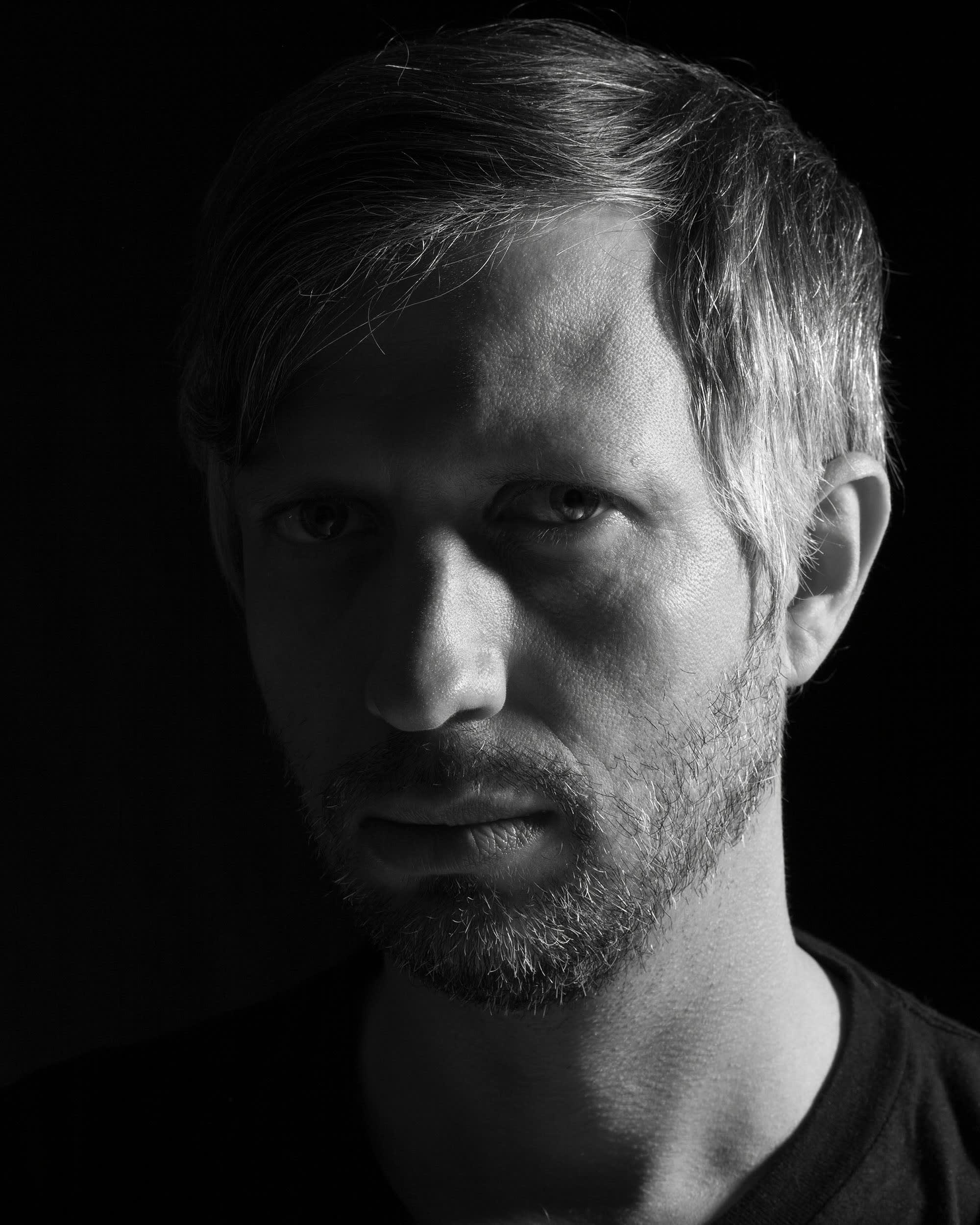
Written originally in French by artist Thomas Block Humery, translated by Mélanie Scheiner
Is the world that Manuel Stehli paints coming into being or has it already ended? This question challenges our understanding of time as something continuously unfolding upon which we march forward. The painter constructs his world from a blank slate, from a position of positive creation, to which he adds, composes, and sums. We can all accept this to be true. But why not look at things differently and flip our perspective? Why not put forth a poetic and radical hypothesis in which painting is not ascribed to the progressive action of a world in the process of becoming, as the 'unfinished' aspect of Stehli's paintings suggest, but rather to that of a world in the process of vanishing and decomposing?
The shadows, volumes, and other details inserted here and there on Stehli's canvas would no longer be sketches so much as the vestiges of a sophisticated society receding further and further from view. Under this premise, Manuel Stehli would be the renderer of future memories, producing a meditative form of painting that liberates the viewer from Time.
I see here an artist of myriad potentials, who synthesizes genesis and the apocalypse. A painter of both beginnings and ends, of literalness and complexity, of presence and absence. These works seem to speak to us of such paradoxical and indescribable possibilities, which are emphasized by their muted characters.
There is in the work of Manuel Stehli an almost romantic prescience, that of the artist who sees what his peers can barely perceive. I see in his paintings a world stripped bare, flattened and simplified, whose brutalist rendering on the surface obscures a certain nostalgia encapsulated within. I perceive a world that was, and of which the memory remains briefly accessible upon visual contact with a bent elbow, the nape of a neck, or any other hidden detail. A mental perception. In this way, Manuel Stehli simultaneously constructs and deconstructs his tableaux. And it is from this deconstruction that the sap and force of his paintings come through.
Stehli's ambivalent paintings, at once warm and inert, familiar and mysterious, join the ranks of other great cyclical works, such as Kubrick's 2001: A Space Odyssey or Mahler's Das Lied von der Erde, that depict a world in the midst of making, remaking, and unmaking itself. A world that is as much a dusk as it is a promise.
-

© Manuel Stehli. Photo: Luis Bortt
